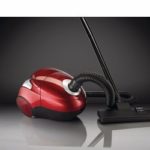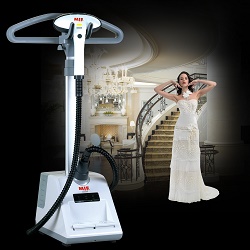What to do if you accidentally collected mercury with a vacuum cleaner
In general, things like vacuum cleaner and mercury should not be compatible. But if it really happened, it is advisable to figure out what to do if you accidentally collected mercury with a vacuum cleaner, and what the consequences will be. And to find out whether it is possible to fix what has already happened.
Content
What is dangerous mercury
Mercury is a health hazard: people can get it by breathing in fumes severe poisoning. It is also dangerous when exposed to the skin of a person or animal. Mercury is very toxic to any living thing. Therefore, we must do everything to neutralize it. First of all, it is necessary to protect the respiratory organs and all exposed parts of the body, as it enters the body through inhalation and as a result of contact with mucous membranes.
As for the vacuum cleaner, there is a danger of another kind. The fact is that if the mercury gets into the suction unit, it turns it into a hearth emitting mercury vapor.
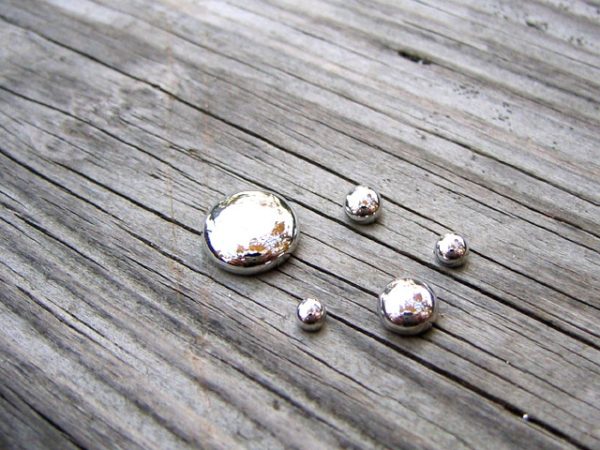
And even in a quiet state, such a device is able to create a toxic background indoors. And if such a vacuum cleaner after doing the cleaning in the house, the mercury vapor will spread throughout the house (more about the principle of the device -how does a modern vacuum cleaner work).
Mercury, getting into the vacuum cleaner (any modification) is deposited on its heating elements, namely on the engine. And during its next use, settled vapors can get into the air already with a much greater concentration, which is very harmful for breathing. And only the timed measurements of the content of mercury vapors in the air will help to determine whether it is possible to use the vacuum cleaner further or is it best to get rid of it.
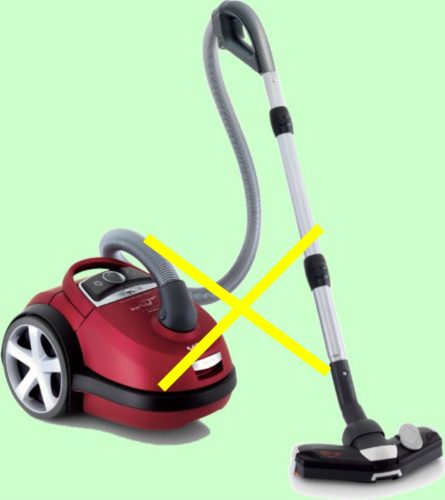
You can not clean up the mercury with a vacuum cleaner!
What to do with such a vacuum cleaner
You can throw it away, and you can do without such drastic measures. To get started is to check whether the mercury really got into the unit or it just seemed to you. For this you need to do special tests (in the form of strips) for the presence of mercury vapor in the device.
How to use this test:
- Place the vacuum cleaner unassembled (all its parts must be separated) in a plastic bag corresponding to its size.
- Put the test strip inside the bag with the reagent up.
- With a high concentration of mercury vapor, the strip in 1.5-2 hours will acquire a light gray color.
- In this case, we act according to the method of exclusion: we remove the filters and the dust collector from the package and perform the test anew, adding the remaining parts into a new clean package.
- If the test strip again became light gray, then there are two ways - either to throw out the vacuum cleaner, or to demercurate it (remove mercury) independently, which is quite difficult. You can also call specialists - demercurization.
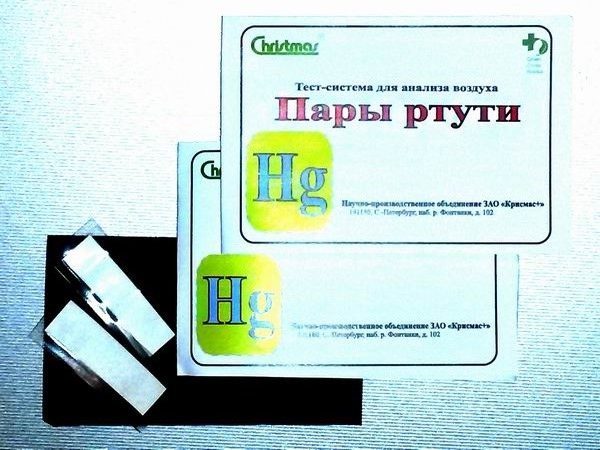
It is also necessary to make measurements of the level of mercury vapors in the room itself, laying out test strips in different parts of the room.
Demercurization specialists will make the necessary measurements correctly and on time. If a conclusion is drawn about the suitability of an infected device, the vacuum cleaner will be subjected to special chemical treatment for neutralizing mercury. They can also competently and professionally handle other places of contact with mercury.The cost of calling specialists at home is low and available to almost everyone.
How to clean the vacuum cleaner from mercury yourself
For such purposes, there is a special tool for sale at the household level. You just need to read the instructions and do as indicated. For example, specially sold demercurization kits "Mercury Eater" are a good chemical way to neutralize mercury yourself. These kits are designed specifically for safe use in living rooms by people who do not have special training. Substances in them are non-toxic, do not harm the surfaces and do not require the use of protective equipment.

The word "demercurization" (purification from mercury) comes from the ancient Roman word (mercury - in the translation of mercury). Demercurization is the elimination of mercury by various methods to avoid poisoning people with toxic fumes.
If there is no demercurizer, you can do with improvised means, namely:
- Everyone needs to leave the room and close all doors tightly to avoid the spread of mercury vapor.
- Open the windows and air the room thoroughly.
- Wear a cotton-gauze bandage and rubber gloves.
- Mercury can be collected by syringe, rubber bulb, a small syringe or pieces of scotch tape, to which it adheres well.
- Prepare an aqueous solution for demercurization, in the proportion of 2-3 g of manganese (potassium permanganate) to 1 liter of water (warm).
- If there is no potassium permanganate, you can use another solution. To do this, mix 40 g of rubbed soap with 50 g of soda ash and pour 1 liter of water.
- With the resulting solution, wash the place where mercury was spilled, and put all the parts of the vacuum cleaner wiped with a solution into it.
- Be sure to handle the vacuum cleaner hose.
- To air the room for several days.
- All items involved in cleaning (gloves, shoe covers, gauze dressings) must be disposed of.
- In the processed vacuum cleaner, change all filters and dust collectors to new ones.
After this, for a long time to do daily wet cleaning with chlorine-containing preparations of the “Whiteness” type. All these procedures, of course, do not guarantee the complete disposal of mercury, but they will help reduce the level of concentration of toxic fumes.
What to do with a vacuum cleaner after demercurization
The processed vacuum cleaner should be turned on for the first time every day for 10-15 minutes (and this should not be done in a residential area).This is necessary to reduce the content of mercury on the windings, the rotor and other parts of the device. After such a purge for a week, you can already use a vacuum cleaner, but every 4-5 cleanings replace all filters without fail (in total, change filters three times).
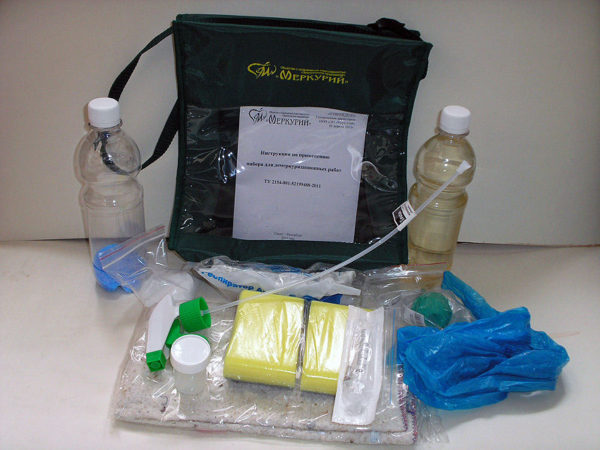
Demercurization kit
In case of accidental flow of mercury from a broken thermometer:
- You can not use a broom or a mop for cleaning mercury, this will only increase the likelihood of vapor separation throughout the house.
- It is impossible to use a vacuum cleaner for cleaning mercury contaminants, since during its operation the poisonous substance heats up and increases many times, and the device in most cases is subject to disposal.
- You can not throw mercury into the toilet, otherwise the whole house will be exposed to the danger of infection.
Tips of people who have already had similar incidents
The opinion of most of them comes down to the fact that there will be no particular harm from one broken thermometer. Indeed, in hospitals, these thermometers break more often than at home. It will be enough to do the following:
- Mercury can be collected with a cotton swab dipped in a solution of potassium permanganate.
- Rinse the place where it was spilled.
- Wash all parts of the vacuum cleaner with a solution and put it away from the living room for several days.
- Filters and dust collectors of the device - change.
- If in doubt, call a SES representative who will measure the level of mercury vapor and advise what to do.
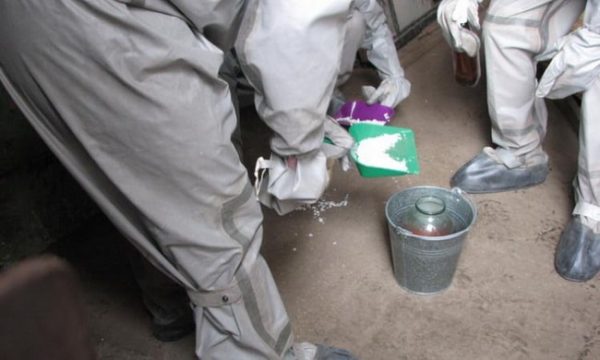
If you have collected spilled mercury due to inexperience with a vacuum cleaner, first of all open all the windows in order to erase mercury vapors as quickly as possible. Then perform all the above procedures. In some cases, you may have to say goodbye to a vacuum cleaner and buy a new one. By the way, mercury thermometers have long been replaced by safer ones - electronic, infrared or alcohol models. But for the future it is necessary to take into account that it is impossible to collect mercury with a vacuum cleaner.

/rating_off.png)






